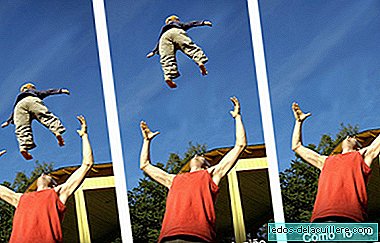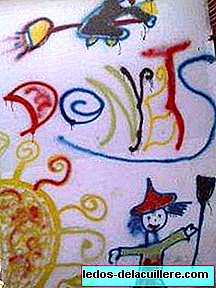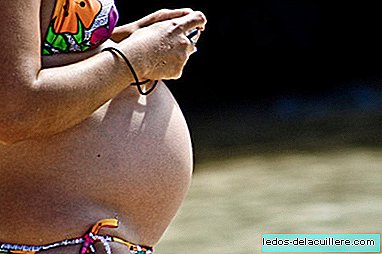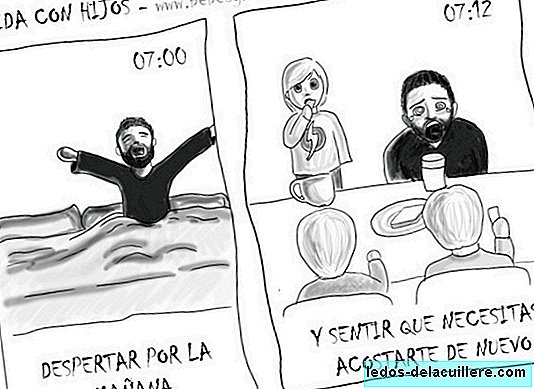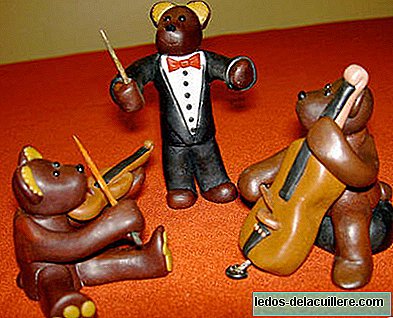
We are going to start a series dedicated to classical music to bring it closer to children and discover how it can be described with music, how melodies can talk about animals, the sea, the sky ... We will discover how In this classical music for children we find the animals.
These are very different pieces, with the common point that they are dedicated to animals, a descriptive music that tries to transfer the image and sounds of animals to the listener. We will focus on works as well known as "Pedro and the wolf" or "The Carnival of animals", but also in other less popular but also interesting.
Classical music for children: Pedro and the Wolf
"Pedro and the wolf" is a symphonic composition Sergei Prokofiev written in 1936 and based on the Russian folk tale with the same name. Prokofiev's work is a children's story (with the text adapted by the composer himself), spoken by a narrator accompanied by the orchestra. Among the characters we have four animals each represented by a different instrument.
The bird in "Pedro and the wolf" it is interpreted by the flute, remembering for its timbre, its lightness and its tessellation to the trills and gorgeos of the birds:
The duck with the oboe, an instrument that gets into the skin of this animal for its nasal sound:
The cat It is assumed by the clarinet in the grave register, which mimics feline and stealthy gait on its padded legs:
The wolf with a trio of tubes, suggesting ferocity and dark character with its metallic bell:
"The Carnival of animals" for children
The carnival of the animals" ("Le carnival des animaux") is a musical suite in 14 movements composed by the French romantic composer Camille Saint-Saëns. In this piece we find a great opportunity, as we have already said, to recognize the richness of the sounds of the different instruments while associating them with different animals.
The first movement is the "Introduction and royal march of the lion":
"Turtles" ingeniously uses the well-known can-can of Jacques Offenbach Orpheus operetta in Hells, playing the usually dislocated melody at an unusually slow and leisurely tempo:
Hens and roosters They also have their place in this fun Carnival:
Fast animals They make us imagine hares or galloping horses:
The Kangaroos jumping:
Even stone animals make their appearance in "Fossils", with the xylophone mimicking the resonance of bones. And, among other quotes, appears the macabre Dance of Saint-Saëns himself, starring a skeleton.
Within the "Long Ears Characters" we have the elephant: "L'Éléphant" with the double bass.
And at the end of the work, in which most of the animals represented on the scene are reviewed, we also find a "wink" to other animals with big ears, the donkies, end with which Saint-Saëns could be referring to critics; attention to "brays":
Vivaldi spring
In "Spring" From Vivaldi, one of the first examples of descriptive music, the composer describes different country scenes. In the second movement of this concerto grosso Vivaldi suggests the barking of a dog with short and repeated notes of the strings.
Haydn's Creation
In "The Creation" of Haydn It is narrated, as the name implies, Genesis, when God created the Universe. In this Oratory, each day is dedicated to creating a part of what we know about the Earth, dedicating a special moment to the different animals when the sixth day arrives, in movement 21, "Gleich öffnet sich der Erde Schos".
In the fragment we hear below we have the horses, although Haydn in this number (which lasts 3'30 minutes) describes other animals. The narrator goes by naming them: "the lion that roars joyfully", "the agile tiger", "the fast deer with the horned head", "the noble horse with the horsehair", "the herds of oxen", "the sheep meek in the pastures "," long rows of insects "...
Poulenc works
The French composer Francis Poulenc has among his creations several interesting works for children. Poulenc, a great lover and admirer of Mozart and Beethoven's music, also wrote songs for children, works for children's choirs, and three songs about poetry by Federico García Lorca.
Poulenc put music on the famous elephant from Jean Brunhoff's story, the "History of the Babar Elephant". Other animals star in their titles: "The model animals" or also the suites for ballet "Les biches" ("Las corzas", written for Diaghilev's Russian ballets, where his music marks a return to tonality in its most simple and traditional forms):
Here we have a masterpiece by Poulenc, although less known, "Le Bestiaire" ("The Bestiary"), for voice and piano, with text by the French poet Guillaume Apollinaire. In the video we see the different animals parade thanks to the illustrations and next to the text in French. The dromedary, the goat, the grasshopper, the dolphin ...
We hope that with this selection you will find the best classical music to enjoy with children, savoring the melodies, knowing the instruments, while we see the different animals pass before our ears. Soon we will return with new music that evokes other landscapes.




